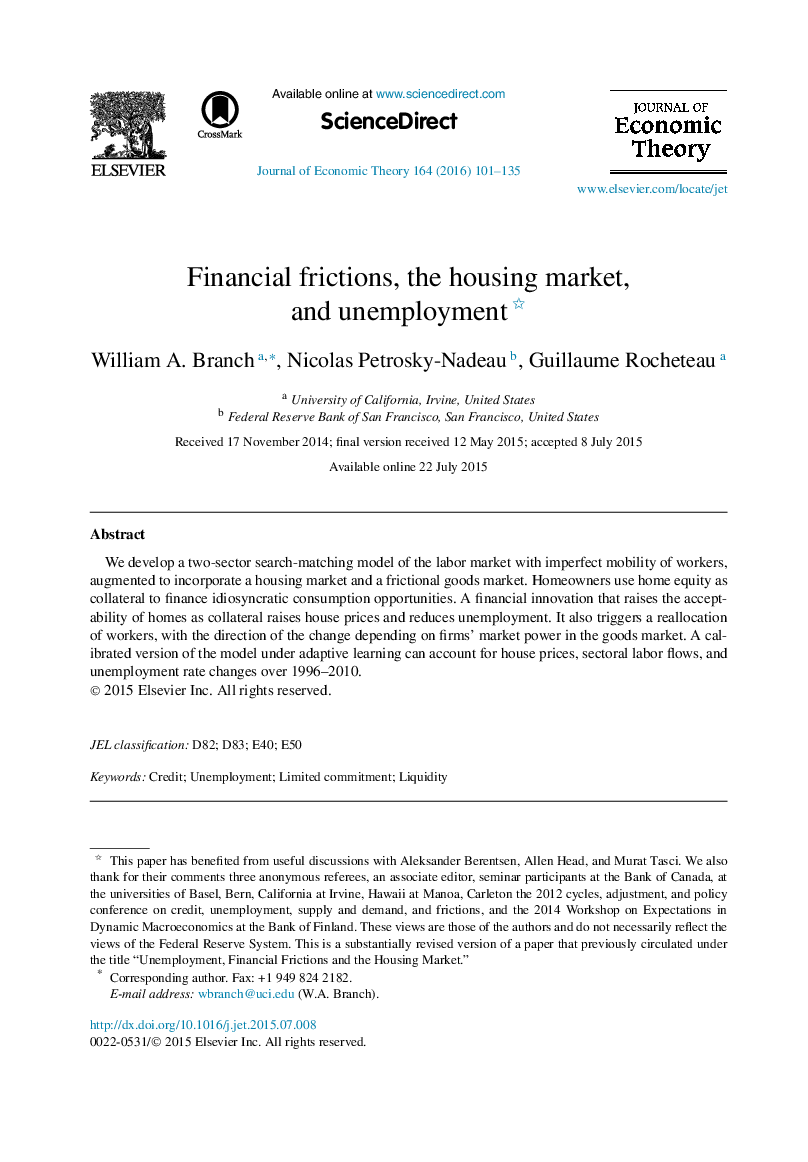| Article ID | Journal | Published Year | Pages | File Type |
|---|---|---|---|---|
| 956598 | Journal of Economic Theory | 2016 | 35 Pages |
•Two-sector search-matching model of the labor market with imperfect worker mobility.•Incorporate a housing market and a frictional goods market.•Financial innovations raise acceptability of homes as collateral to finance consumption.•Effects are to raise house prices, reduce unemployment, reallocate workers across sectors.•Calibrated version of the model under adaptive learning accounts for key U.S. data.
We develop a two-sector search-matching model of the labor market with imperfect mobility of workers, augmented to incorporate a housing market and a frictional goods market. Homeowners use home equity as collateral to finance idiosyncratic consumption opportunities. A financial innovation that raises the acceptability of homes as collateral raises house prices and reduces unemployment. It also triggers a reallocation of workers, with the direction of the change depending on firms' market power in the goods market. A calibrated version of the model under adaptive learning can account for house prices, sectoral labor flows, and unemployment rate changes over 1996–2010.
